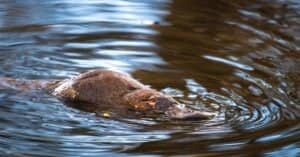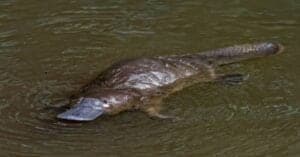Did you know that platypuses were thought to be a joke when they were first discovered? People thought they were being tricked with two animals sewn together; that’s how unique the platypus is! There are many things to learn about these one-of-a-kind creatures.
For example, did you know that a baby platypus is called a “puggle?” Another baby Australian mammal that has also been assigned this nickname is the echidna. In the future, it’s being debated whether or not this cute baby name may be changed to “platypup” (for the platypus at least).
But for now, we are happy for the puggle platypus to hold its title. Below are five pictures and interesting facts about the puggle platypus.
#1: Platypus Puggles Can’t Swim
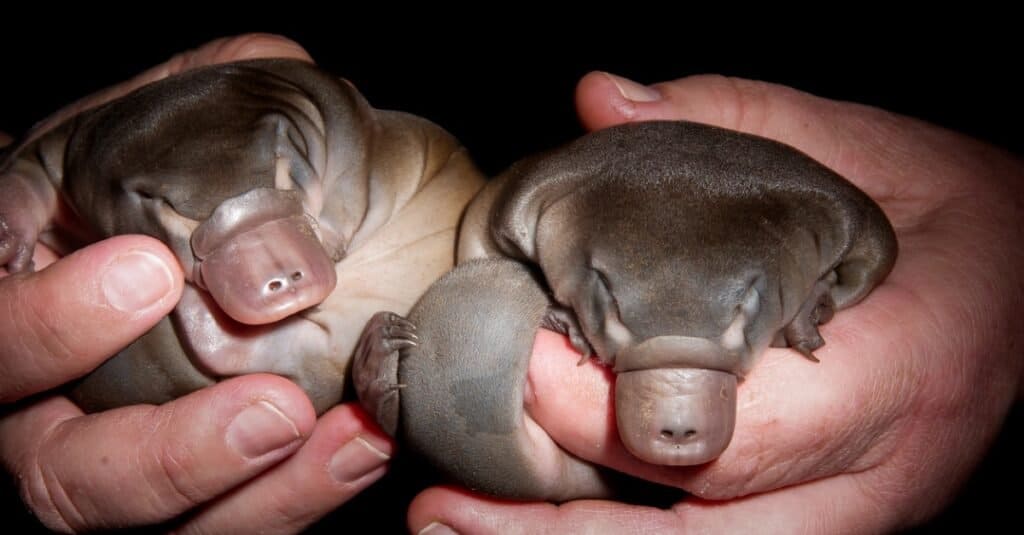
Newborn platypuses cannot swim.
©iStock.com/IainStych
The adult puggle platypus can swim up to two and a half miles per hour! Would you believe that when they’re born, puggles platypuses can’t swim at all? Even though it may seem they are born in the water, baby platypuses are born incredibly fragile and cannot swim on their own.
They stay close to their mothers, who teach them everything they need to know to grow up and survive. This includes how to be speedy swimmers. They have a tail like a beaver that they use to steer them around. Pair that with their webbed feet and you have the perfect formula for speedy swimming!
By the time puggles platypuses reach about five months in age, they can swim and find food resources all on their own.
#2: Male Platypus Babies Are Venomous
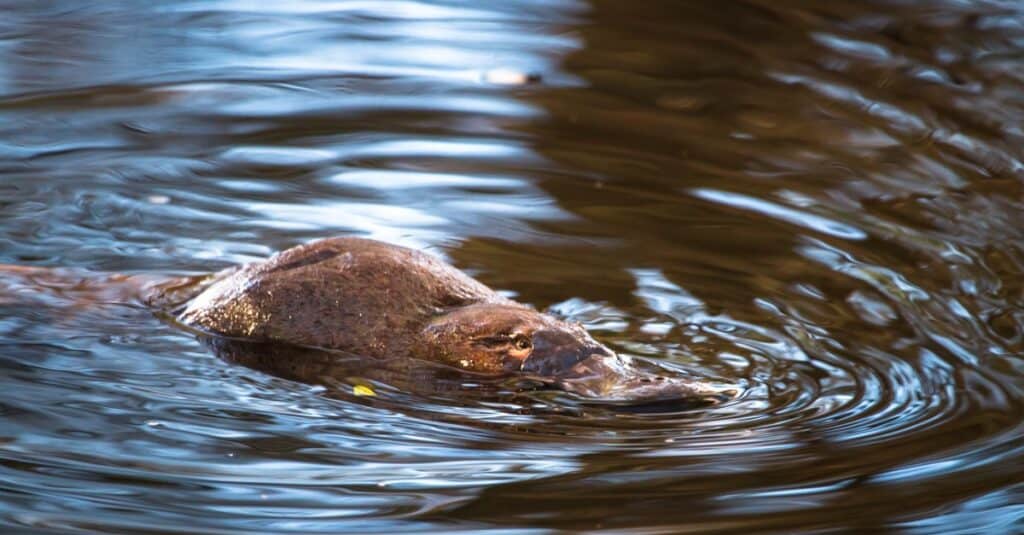
Male platypus puggles are among only six venomous mammals on Earth.
©iStock.com/Kevin Wells
There are only six venomous mammals on the planet, and the male puggle platypus happens to be one. Male platypuses have a ‘stinger’ on the back of the hind legs that secretes their venom.
Previously, it was widely thought that this was used as a defense against predators in the wild. However, we’ve come to learn that around mating season, they produce even more venom than usual. That discovery has led many to believe that venom is intended to help the males during the mating season.
#3: Platypus Babies Don’t Have A Stomach
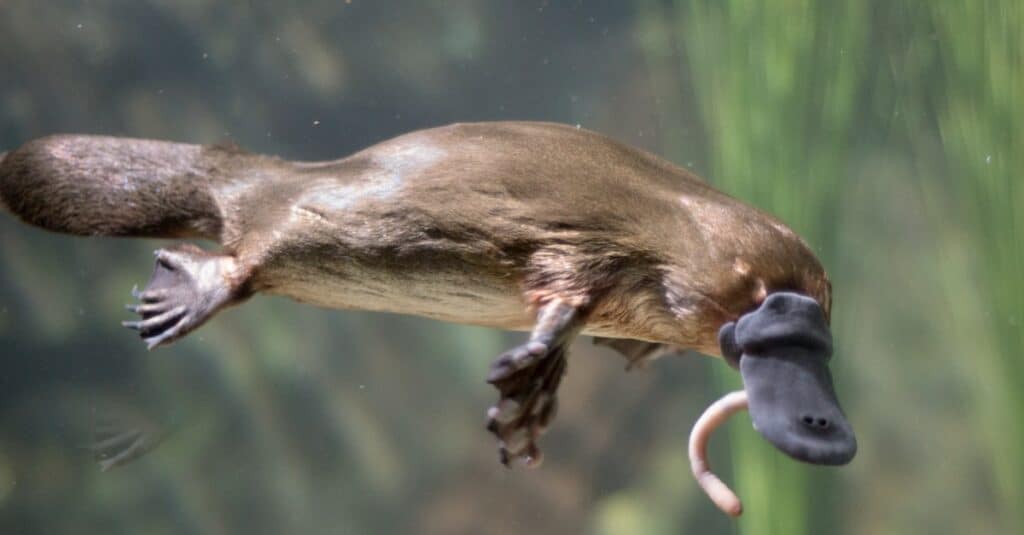
Platypuses don’t have stomachs.
©iStock.com/JohnCarnemolla
Did you know that cows have four stomachs? Or that the beaked whale has up to 9? It’s crazy to think about animals having multiple stomachs when the baby platypus is born without one all. Instead of the things they eat going down and collecting into their stomachs, it goes directly into their intestines.
Researchers have gone back and forth on the reasoning behind the absence of a stomach. Still, the main conclusion is that the puggles platypus has such a simplistic diet that evolution decided a stomach wasn’t necessary.
#4: Baby Platypuses Are Born With A Set Of Temporary Teeth
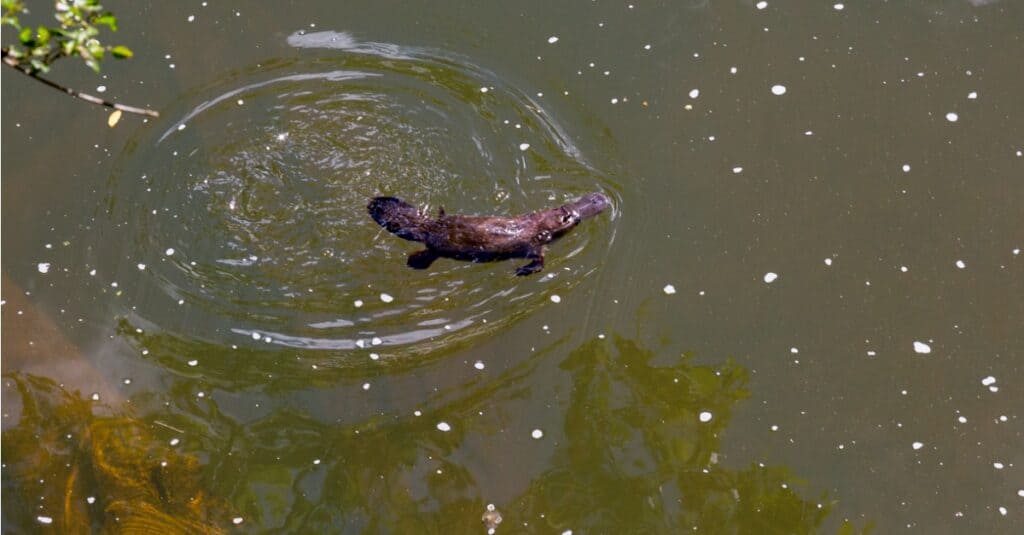
Platypus babies are born with a temporary set of teeth.
©iStock.com/markrhiggins
Female Platypuses dig a tunnel that will be used as a nursery for her young. She lays her eggs there and then sleeps on top of them while they are busy incubating. Like many other babies that have to hatch from an egg, they are born with what’s called egg teeth that help them break free of their shell prison.
After about four months of being cooped up in their nursery with mom, they’re finally able to emerge and take their very first swim. It’s around this four-month mark that these babies lose all their teeth and never get them back. The adult puggle platypus actually use gravel, or little rocks, that they scoop into their mouths to help them ‘chew’ their food up for them.
#5: Baby Platypuses Are Born Hairless

Platypus are born with no hair.
©iStock.com/slowmotiongli
Baby platypuses have hair made to keep their skin dry while spending most of their time in the water. It’s said that a platypus can be in the water for hours and yet have a completely dry coat of fur when they make it to land.
This couldn’t be any more opposite of platypus babies considering they don’t have any hair at all when they hatch. By the time they are ready to leave the tunnel their mother dug for them at about four months old, they’ve grown a full coat of hair to protect their skin. Platypus fur even glows under a UV blacklight!
How Old Was the Oldest Platypus Ever Recorded?
While fresh, young, adorable platypuses are a joy to behold and learn about, how long do these creatures typically live, and how old was the oldest one ever?
Most wild platypuses live from 7-12 years, while those in captivity can live up to 20 years. A senior wildlife ecologist named Josh Griffiths, who works outside of Melbourne, Australia, was amazed when he and a group of students discovered a micro-chipped wild male platypus that was first chipped in 1996–indicating it was 21 years old. Prior to that discovery, they believed that males didn’t usually live over 10 years.
He thinks this senior survived longer than usual due to low competition in the area for resources, probably the result of a drought that had caused many platypuses to die out. We hope this lucky platypus will carry on for more years to come!
The photo featured at the top of this post is © iStock.com/IainStych
FAQs (Frequently Asked Questions)
How much do baby platypuses weigh?
When a baby platypus is born, it’s very tiny and fragile. Baby platypuses are around the size of a nickel when they first hatch, and they weigh anywhere from 50 to 80 grams. The babies are delicate and unable to swim well, so they stay with their mothers for protection for about 3 to 4 months.
What do baby platypuses eat?
Baby platypus are unique because they can lay eggs like oviparous animals and produce milk for their young as mammals do. Because of their uniqueness, they don’t have any nipples to feed their babies with. The new mothers sweat the milk out, and baby platypuses drink the milk that has pooled in the grooves of mom’s skin, and they will also suck the milk out of hair that she has.
Where do baby platypuses live?
In general, platypus live in freshwater and only live in one part of the world. Adult platypuses spend the majority of their time in the water, but they do like to make their way to the riverbanks so they can get busy digging themselves tunnels and chambers within these tunnels. Baby platypuses stay close to their mothers for around the first 3 to 4 months of their lives to feed and protect them until they are strong enough to do so on their own. In that time, their mom teaches them how to swim, find food, dig the tunnels to live in, and much more!
What are baby platypuses called?
Baby platypuses are called puggles. However, there are many people in a movement that are calling for a name change to be given to the puggles. Platypups is the adorable name that members of this movement think it should be officially changed to, and for good reason!
Thank you for reading! Have some feedback for us? Contact the AZ Animals editorial team.



